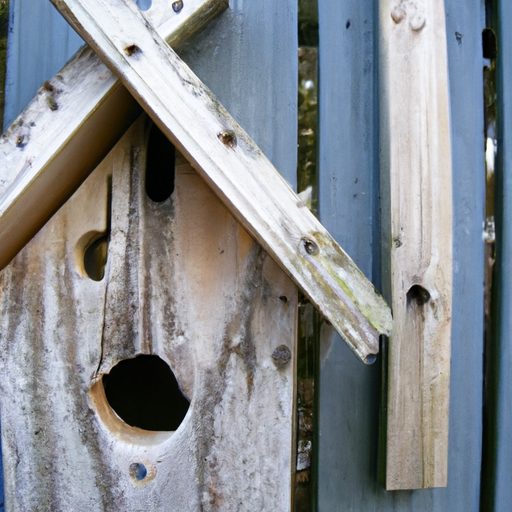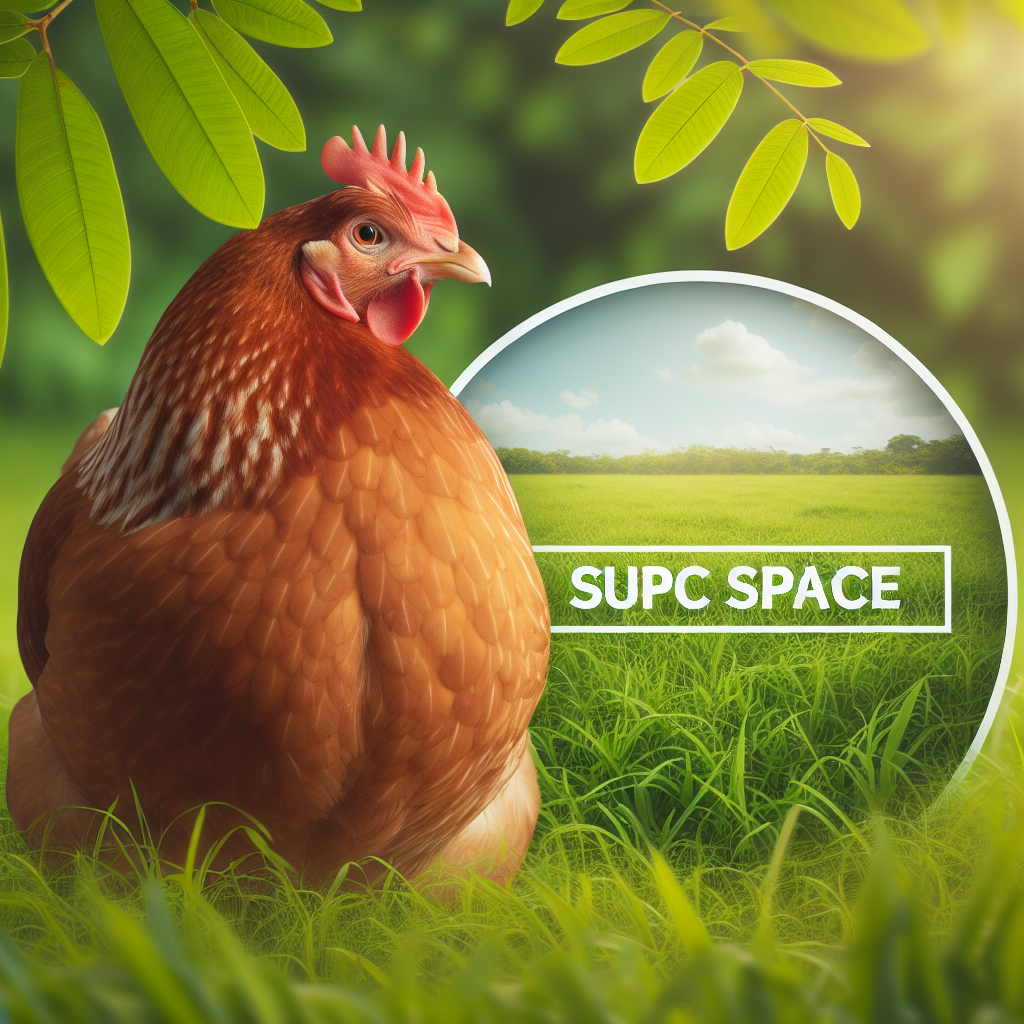Imagine creating the perfect home for our feathered friends. As avid bird enthusiasts, we often wonder about the best practices for providing them with comfortable roosting and nesting spaces. So, what exactly are the recommended space allocations for roosting and nesting? How can we ensure that our birdhouses and bird feeders are designed in a way that promotes their well-being? In this article, we will explore the answers to these questions and discover the guidelines for creating the ideal habitat for our avian companions.
H2: Space Requirements for Roosting and Nesting
Roosting and nesting are critical behaviors for many bird species. These activities provide them with a safe and secure space to rest, sleep, and raise their young. It is essential to understand the importance of appropriate space allocations for roosting and nesting to support the well-being and conservation of birds.
H3: Importance of Appropriate Space Allocations
Providing adequate space for roosting and nesting is crucial for the health and welfare of birds. A lack of appropriate space can lead to increased stress, reduced breeding success, and even abandonment of nesting sites. On the other hand, providing sufficient space allows birds to exhibit natural behaviors, reduces competition among individuals, and promotes successful reproduction.
H3: Factors Influencing Space Requirements
Several factors influence the space requirements for roosting and nesting. The size and specific behaviors of the bird species are crucial considerations. Larger birds, such as eagles or owls, require more extensive roosting spaces compared to smaller birds like sparrows or finches. Other factors include the species’ social structure, nesting habits, territorial behavior, and whether they are migratory or resident birds.
H3: Ideal Dimensions for Roosting Spaces
The dimensions of roosting spaces should be suitable for the specific bird species. Generally, roosting spaces should be spacious enough for birds to spread and flap their wings comfortably. It is recommended to have a minimum height of 18 inches to allow birds to assume their natural perching positions. For larger birds, a ceiling height of at least 6 feet is preferable to accommodate their size and wingspan.
H3: Recommended Space Allocations for Nesting Areas
Nesting requirements vary among bird species, but there are some general recommendations for nesting space allocations. Nesting areas should provide enough space for birds to build their nests without overcrowding. For cavity-nesting species, such as woodpeckers or chickadees, providing appropriately sized nest boxes can help maintain adequate nesting space. It is advisable to have separate nesting areas that offer privacy and protection from predators.
H2: Roosting Space Requirements
H3: Understanding Roosting Behaviors
Roosting is a crucial behavior for birds as it allows them to rest, thermoregulate, and conserve energy. Different bird species exhibit varied roosting behaviors. Some species roost alone, while others form large communal roosts. Understanding the specific roosting behaviors of the bird species you aim to support is essential for providing appropriate space allocations.
H3: General Space Recommendations
In general, roosting spaces should be designed to accommodate the size and number of birds. Perches should be spaced adequately to reduce competition and aggression among individuals. It is advisable to provide multiple perching options, including varied heights and sizes, to cater to different bird species’ preferences.
H3: Specific Space Allocations for Different Species
Each bird species has unique requirements for roosting spaces. For example, raptors, such as hawks or eagles, need larger perching areas with branches or platforms to mimic their natural roosting sites. Songbirds, on the other hand, prefer smaller perches, often in the form of trees or shrubs. Researching the specific needs of the bird species you wish to support is crucial for providing appropriate roosting space.
H2: Nesting Space Requirements
H3: Understanding Nesting Behaviors
Nesting is a vital behavior for birds as it allows them to lay and incubate their eggs, and raise their young. Different bird species exhibit diverse nesting behaviors. Some build elaborate nests in trees or on the ground, while others prefer utilizing cavities in trees or man-made structures. Understanding the nesting behaviors of the bird species you aim to support is crucial for providing suitable nesting space.
H3: General Space Recommendations
General recommendations for nesting space include providing sufficient privacy and protection from predators. For ground-nesting birds, ensuring vegetation coverage or creating artificial nesting areas with suitable materials can promote successful nesting. For tree-nesting birds, maintaining and protecting natural cavities, or providing nest boxes, can help create appropriate nesting space.
H3: Species-specific Nesting Space Allocations
Different bird species have specific nesting requirements. For example, waterfowl species like ducks or geese prefer nesting near water bodies, such as ponds or lakes, where they can access food and have a safe environment for their young. Shorebirds may require open areas with short vegetation to nest. Researching the nesting behaviors and preferences of the bird species is essential for providing appropriate nesting space.
H2: Implementing Adequate Space Allocations
H3: Building Design and Modifications
Implementing adequate space allocations for roosting and nesting can involve designing or modifying existing structures. For example, incorporating roosting perches in building designs, such as adding ledges or platforms, can provide suitable roosting spaces for birds. Creating or preserving natural cavities in trees or installing nest boxes can enhance nesting opportunities. Collaborating with architects, builders, and wildlife experts can ensure the effective implementation of space allocations.
H3: Considerations for Indoor Roosting and Nesting Spaces
In some cases, birds may require indoor roosting or nesting spaces, such as in rehabilitation centers or aviaries. Providing appropriate space allocations in indoor environments requires careful planning. Factors like ventilation, lighting, and hygiene should be considered to maintain the birds’ health and well-being. Simulating natural environments, including appropriate perches, nesting materials, and hiding spots, can help create suitable indoor spaces.
H3: Outdoor Roosting and Nesting Implementations
Implementing outdoor roosting and nesting spaces can involve various strategies. Planting native trees, shrubs, and flowers can attract birds and provide natural roosting and nesting opportunities. Installing nest boxes or platforms in suitable locations can enhance nesting possibilities. Creating bird-friendly habitats by incorporating a variety of vegetation types, water sources, and shelter options can support multiple bird species’ roosting and nesting needs.
H2: Monitoring and Adapting Space Allocations
H3: Regular Observations and Assessments
It is crucial to monitor and assess the effectiveness of space allocations for roosting and nesting. Regular observations of bird behavior, breeding success, and population trends can provide valuable insights into the adequacy of the provided spaces. Making necessary adaptations based on these observations can ensure continuous improvement and optimization of the space allocations.
H3: Rehabilitation and Rescue Centers
Rehabilitation and rescue centers play a vital role in caring for injured or orphaned birds. These facilities should provide appropriate roosting and nesting spaces tailored to the specific needs of the bird species they handle. Ensuring that the birds have access to suitable roosting and nesting areas during their recovery can contribute to their overall well-being and successful rehabilitation.
H3: Citizen Science Projects
Engaging in citizen science projects can provide valuable information about bird populations and their habitat preferences. Citizens can participate in monitoring and data collection efforts to assess the effectiveness of space allocations for roosting and nesting. This collective knowledge can guide conservation efforts and help improve the understanding of bird space requirements.
H2: Challenges and Solutions
H3: Limited Available Space
One of the major challenges in providing appropriate space allocations for roosting and nesting is the limited available space, especially in urban environments. However, creative solutions can help overcome this challenge. Designing vertical gardens, green roofs, or utilizing balconies and rooftops for nest boxes or perches can optimize the available space for birds’ roosting and nesting needs.
H3: Multi-species Considerations
Creating space allocations that cater to multiple bird species can be challenging as different species have specific requirements. Considering the diverse needs of various bird species and providing a range of habitat features, perching structures, and nesting opportunities can help accommodate a broader range of species.
H3: Urban Environments
Urban environments often lack natural habitats for roosting and nesting. However, urban areas can still support birds by incorporating bird-friendly features. Planting native vegetation, installing nest boxes, and creating green spaces within urban landscapes can provide valuable roosting and nesting opportunities for birds in cities.
H3: Predation Risks
Predation risks can pose challenges for successful roosting and nesting. Providing adequate protection from predators, such as installing predator guards for nest boxes or using mesh coverings for roosting spaces, can help minimize predation risks. Additionally, establishing safe bird-friendly habitats with suitable hiding places and natural barriers can offer further protection for birds.
H2: Benefits of Appropriate Space Allocations
H3: Improved Health and Well-being
Appropriate space allocations for roosting and nesting promote the physical and mental well-being of birds. By providing them with suitable environments, birds can exhibit natural behaviors, reduce stress levels, and improve their overall health. Adequate space also allows for proper preening, stretching, and exercising, contributing to their overall well-being.
H3: Conservation and Biodiversity
Proper space allocations for roosting and nesting support bird conservation efforts and contribute to maintaining biodiversity. By providing suitable habitats and opportunities for breeding, space allocations help ensure the survival and reproductive success of diverse bird species. This, in turn, promotes a healthy ecosystem and preserves biodiversity.
H3: Species Education and Research
Appropriate space allocations provide opportunities for species education and research. Observing birds in their natural habitats, documenting their behaviors, and studying their nesting and roosting preferences can enhance our understanding of different bird species. This knowledge can be utilized for educational purposes and scientific research, contributing to bird conservation efforts.
H2: Conclusion
Providing appropriate space allocations for roosting and nesting is crucial for supporting the well-being and conservation of birds. Understanding the specific requirements of different bird species, considering their behaviors and preferences, and implementing suitable space allocations can enhance their health, reproduction, and overall survival. By promoting proper space allocations, we can actively contribute to the well-being and conservation of these magnificent creatures.




